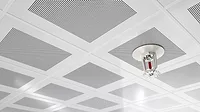Busting the plumbing venting myths
When I took a class on circuits, as in electrical circuits, my fellow students nicknamed the class Magic. Since it lasted two semesters, we called the classes Magic 1 and Magic 2. The class got the name when the instructor started talking about an electron running backwards in a wire. We simplified it to say: You throw a switch on the wall and light comes on — it’s magic!
I don’t recall any class on plumbing referred to as magic. But if there was, it would have to be the subject of venting. To many, venting is magic because it protects the trap seal. However, most are not sure how the venting system works. So rather than studying the scientific details, it is easier to make things up.
The stories I hear about venting are sometimes very comical. There is such an exaggeration of what a vent does, you simply have to laugh. In the plumbing codes, vents have become sacred. Code sections on venting are protected as if they are the gospel.
Don’t get me wrong, venting is a very important and necessary part of plumbing. But the vent system is not sacred. A lot of misunderstanding exists regarding how the vent system works. If you simply state the vent system is designed to neutralize the pressure in the drainage system, you would be 100% accurate. That’s its only purpose. Mind you, the vent system does other things, but its purpose is to neutralize pressure.
The question you have to ask yourself is, how fast can the pressure be neutralized? Take a section of pipe, cap it off, and have a quick opening valve connected to a 1/8-in. tube on one end. Pressurize the pipe section to 7 in. of a water column. If you translate that pressure, it is about a 1/4 psi. In other words, not much pressure. But in a drainage piping system, that is considered high pressure. Now open the quick-closing valve and time how fast the pressure neutralizes to atmospheric pressure.
If you don’t want to do the test, the pressure neutralizes in nanoseconds. That is because air pressure balances quickly. We always say it goes at the speed of sound. I don’t want to justify that, so let’s just say it is very fast.
Busting the myths
Some believe large volumes of air enter the vent through the roof. Still others believe large volumes of air exit the vent through the roof. Which is it? Neither. Go up on the roof and stick your hand over the vent during a period of peak demand. Try to determine how much air is entering or leaving the vent. The answer is very little. The network of piping inside the building is where all the action is taking place. The vent through the roof is simply the control to make sure the pressure is approximately atmospheric.
Yet the various requirements in the plumbing code for the vent through the roof have become part of that sacred territory. I mention this because the solar industry approached me regarding venting through the roof. You may be asking, “What does the solar industry care about the vent through the roof?”
The vent through the roof can screw up the placement of a solar panel, especially photovoltaic solar panels. Most solar panels are mounted about 5 in. above the roof’s surface. So if a vent is sticking out through the roof, anywhere from 6 in. to 12 in., it gets in the way of the solar panel. The end result is a loss of solar energy when you cannot place a panel where the plumbing vent is located.
Notice I said the vent extends 6 in. to 12 in. through the roof. Which is it? The various plumbing codes do not agree on the height through the roof. Yet each code considers their height sacred.
The solar industry came up with the idea of cutting off the vent so that it is 2 in. above the roof. When first suggested to the plumbing world, what do you think the response was? OMG, you can’t do that! The vent needs to terminate 6 in., or is that 12 in., above the roof!
The follow-up question is, why? Why does the vent have to terminate so far above the roof? The answer is, it doesn’t. The vent will work if it terminates at the roof line. Remember, it is only there to balance the pressure in the drainage system. So what difference does the height make in terminating a vent?
I have heard all the wild reasons for the termination height. They include birds building nests. No, actually, the minimum vent size is based on preventing a bird from building a nest. The wind will cause a down draft. No, that’s not true either. The wind will cause siphonage. Again, not true. Rainwater will get in the vent. Good point, that is the reason for making it at least 2 in. above the roof. Otherwise, rainwater would enter the vent.
Hurricanes will cause a problem with a short vent. Hurricanes cause many problems, the least of our worries is the plumbing vent system. Trust me, I’ve experienced a few hurricanes. That’s why I moved to the Midwest; tornadoes are more fun.
Then, there is the concern the roof flashing won’t seal. However, a number of flashings are designed to seal at the roof level. So a termination 2 in. above the roof is easy.
Finally, there is the question of the solar panel blocking the air to the vent. Really? The entire area under the solar panel is open. How is air blocked?
As it turns out, the solar industry has a valid point. The vent can terminate 2 in. above the roof when a solar panel is being mounted on the roof. The vent will still work fine. Pressure will still be balanced in the drainage system. The vent terminal is not sacred.
Speaking about sacred, the holidays are among us. I would like to wish everyone a Merry Christmas, Happy Chanukah and Happy New Year. Have an enjoyable holiday season with your family and friends.
This article was originally titled “The sacred vent” in the December 2015 print edition of Plumbing & Mechanical.
Looking for a reprint of this article?
From high-res PDFs to custom plaques, order your copy today!








